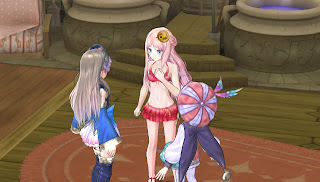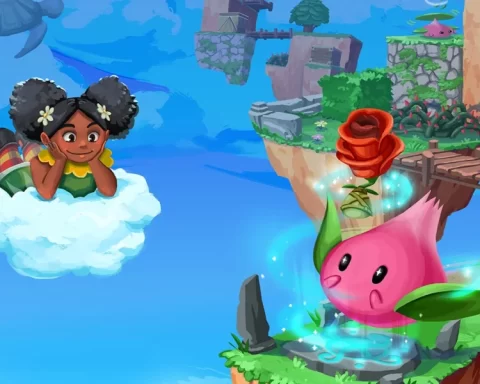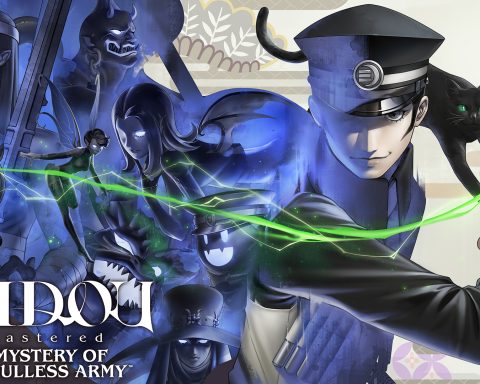 Oh how I love Meruru. I discovered the Atelier series with Rorona. It became my favourite JRPG franchise with Totori, but Meruru is something else entirely; this is the perfect traditional, turn-based JRPG as far as I’m concerned.
Oh how I love Meruru. I discovered the Atelier series with Rorona. It became my favourite JRPG franchise with Totori, but Meruru is something else entirely; this is the perfect traditional, turn-based JRPG as far as I’m concerned.
If you haven’t played an Atelier game before, then you might as well start with this one. But I will give fair warning going in; here’s a game that has a weird focus for an JRPG. See, Meruru is a game that’s about cooking (sorry… alchemising) everything from bombs to healing potions, cake through to armour. Any loot you pick up through the game is nothing more than raw materials, which you then need to make into something useful in order to fulfil quests or get better equipment.

It’s not just in its approach to violence that Atelier Meruru successfully sidesteps the dark shadows its genre cousins often call into; this is one bright and bubbly game. The cheer doesn’t just come from the colourfully simple cel-shading that gives the game a bright and cheerful atmosphere. Nor is it solely a consequence of and infectious music score comprised of bright tunes mixed with some more soulful orchestral work. Both the visuals and soundscape help, but what really makes the whole Meruru experience so darned happy is the characters. Meruru is the kind of girl that has simply never had a bad day in her life, and given that her entire quest involves getting her father king’s permission to be an alchemist, there is a refreshing approach to narrative running through this game when compared to its genre peers; it’s simple, it’s focused, and pleasant. No global conflict, no apocalypse and no people-who-can’t-age-so-watch-their-loved-ones-die. Meruru is just happy. Sometimes, just happy is enough.

Now, Atelier Meruru, being a GUST game, is built with a certain audience in mind – the Japanese folks (mostly men) that hang around Akihabara in their spare time. Akihabara is that place with loads of Maid Cafes and a 7-story adult goods shop. As these games go (and there are a lot of them made every year, I can assure you – Akihabara is a lucrative little area for game developers) Meruru is perhaps the most accessible one ever produced. Let’s call it a “gateway drug” to otaku JRPGs, in the sense that it’s about as potent compared to some of the other games made for the Akihabara crowd is as caffeine is as a drug when compared to heroin. There’s just a whiff of fan service running through the game, and of course early adopters of the Vita game get to dress Meruru up in a rather fetching bikini, but compared to games like Hyperdimension Neptunia and games that have no hope of ever being localised, the content of Meruru shouldn’t offend anyone. This is a good thing, as I would hate for anyone to be offended by such an innocent game.

It plays like a dream, too. As a princess, Meruru is not only an adventurer, but also able to build up her kingdom by investing in various public works projects. Players earn the points to do that by completing various in-game quests. It lends the formula a simple but entertaining simulation aspect that wasn’t present in previous titles in the trilogy and as the various buildings grant a range of boons there’s some light decision making to make over the course of the game that creates an additional layer of engagement. Rorona and Totori before Meruru both had a similar “scoring” system as quests were completed, but the effect of those scores were far more abstract, being little more than points that would rank up at certain thresholds and unlock a few new abilities. The rewards structure of Meruru feels more tangible, and so the game is more rewarding.

The main challenge in Meruru from a time management perspective is balancing the alchemy, with the ingredient gathering and then with the exploration and combat if you’re so inclined. It’s impossible to succeed at the game by focusing on just one action, and it’s entirely possible that the first play through will be a write-off for the first year of in-game time as you work out where that ideal balance lies. Eventually the game settles down into a nice, steady rhythm, and it’s at that point where hours can be lost, as everything is paced just right to create the “just one more quest” response that any good player has to a well-made game. Three games in and GUST nailed the distribution of the ingredients for the various alchemical recipes, resulting in a supremely balanced and overwhelmingly fair game for both people that just want to get to the end, and people that like tackling the tougher optional side-quests.

That tiny issue aside, this is by far GUST’s best game, and one of my very favourite games of all time. The Vita port is spectacular with some extra content, rebalancing of certain boss fights and that earlybird costume. If you’ve got a save from the equally-spectacular port of Totori on the Vita, you’ll unlock some extra bonus items too.
Class package. Class game.
– Matt S
Editor-in-Chief
Find me on Twitter: @digitallydownld
Our Scoring Policy







